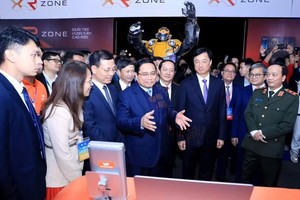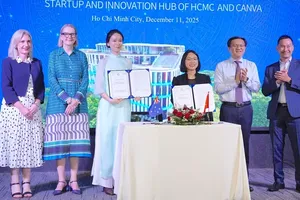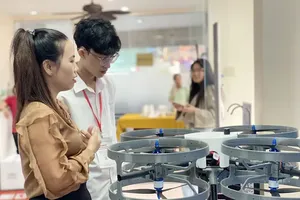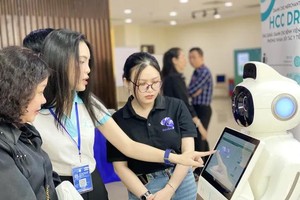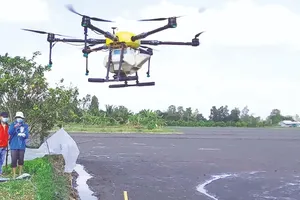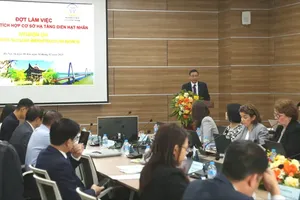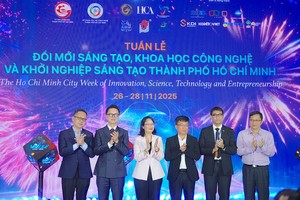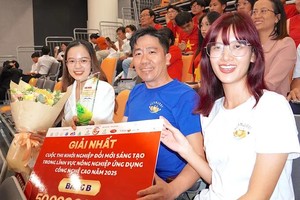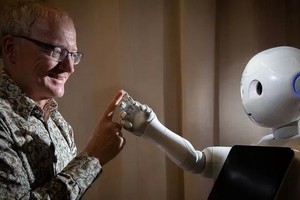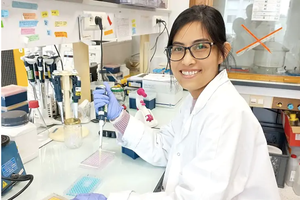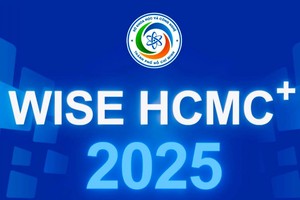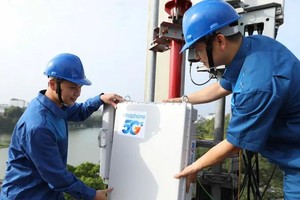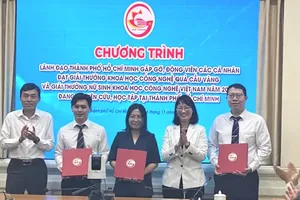
The 29th international symposium ‘PASCOS – Particles, Strings, and Cosmology’ welcomed 145 scientists from 22 nations and territories to ICISE in Quy Hoa Valley of Quy Nhon City in Binh Dinh Province.
Chairman of Rencontres du Vietnam Prof Tran Thanh Van informed that the PASCOS symposium was first held 34 years ago, becoming an event for scientists and researchers to have in-depth discussions on current advances in the fields of particle physics, string theory, and cosmology.
In Vietnam, thanks to Prof Pham Quang Hung (from Virginia University, the US), Rencontres du Vietnam has been able to hold the PASCOS symposium this time in ICISE, bringing together particle and cosmological physicists from many continents, including 21 scientists from the US and 12 young Vietnamese scientists. Notably, the conference also has the participation of many professors from major centers, universities in Italy, the US, and Japan.
“This is a high-level conference and the 2nd time the organizing committee has chosen Vietnam to hold it. The 2016 PASCOS symposium at ICISE was attended by Prof Takaaki Kajita (Japan, Nobel Prize in Physics 2015), who then supported ICISE to establish the Neutrino Physics research group at the Institute for Interdisciplinary Scientific Research and Education (IFIRSE) in 2017. This is also the only experimental Neutrino Physics research group in Vietnam participating in two international experiments in the field of neutrino in Japan, namely the T2K experiment and the Super-Kamiokande (SK) experiment”
Prof Tran Thanh Van.
The conference included 14 plenary sessions, 3 parallel sessions presenting 111 research papers on such topics as neutrino physics; dark matter and dark energy; physics with the large hadron collider (LHC); precision measurement experiments; cosmology; the String Theory; new technologies and accelerators.
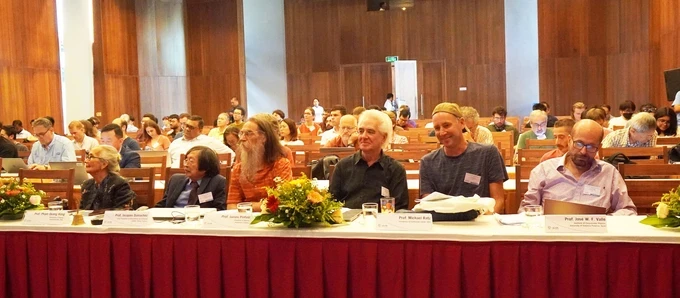
The conference also discussed the important discoveries made by scientists in recent years, such as the nature of neutrino mixtures, Higgs particles and gravitational waves.
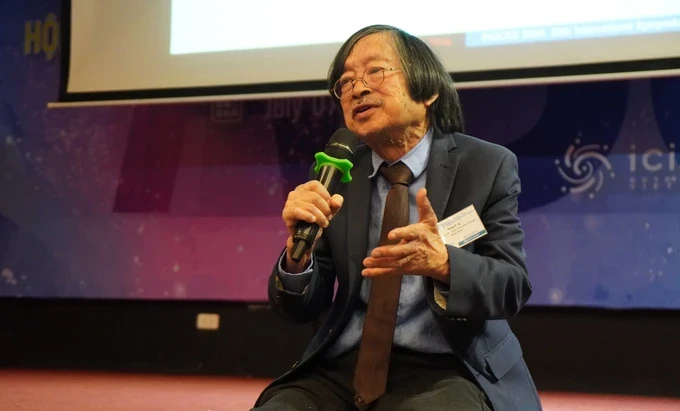
Prof Pham Quang Hung, member of the organization board, shared that in particle physics, the latest discovery was finally found 12 years ago. Since then, there have been no new discoveries, many theories have made some new discoveries about some particles. However, scientists are still struggling to prove and experiment.
Through the symposium, scientists sat down to discuss and find ways to decipher the unanswered questions and try to address both the practical, concrete, and experimental story. The research papers will dissect the theories, look for modern technologies and machines, and elaborate experiments costing billions of USD to perform.
“Some research papers with new discoveries, such as some new reactions that can change the previous theory about dark energy will be delivered in the event. More importantly, the Vietnamese research group will present new discoveries of this dark energy,” added Prof. Hung.
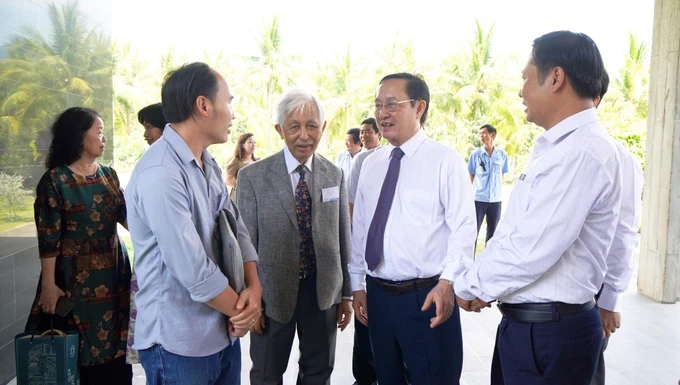
Particularly, Dr Cao Van Son from IFIRSE (under ICISE) gave a presentation on new findings of the T2K Experiment that he is currently conducting with his colleagues. This is an international experiment located in Japan with 500 members from 14 countries and territories. Vietnam is the only Southeast Asian member to participate in the experiment since 2017 with 3 young doctors.
T2K is a huge experiment that has published many successes in international journals and magazines. It is leading the world in improving understanding of the properties of neutrinos and shedding light on the mystery of the lack of antimatter in the universe.

On this occasion, a celebration for the 60th anniversary of the Center for Theoretical Physics and General Physics in Vietnam, chaired by Prof Tran Thanh Van was held. There was a presentation on ‘Astronomy in Vietnam, Present and Future’ by Dr Pham Ngoc Diep from the Institute of Nuclear Energy of Vietnam.
Representing young researchers on Neutrino Physics in Vietnam, Dr Cao Van Son informed Minister of Science and Technology Huynh Thanh Dat about the project ‘Raising the Status of Vietnamese Science with Neutrino Physics’.
He proposed that the Ministry of Science and Technology allow a research group of 6 domestic researchers (5 young doctors) to participate in the Sper-Kamiokande (SK) experiment located in Japan, scheduled to operate in 2027.

Sper-Kamiokande is the world's largest underground neutrino observatory (1,000m), built in 1991 and operational in 1996. The SK experiment is considered the "invention machine" of science in this century as it is 10 times better in sensitivity than the experiment that won the Nobel Prize in 2015.
At present, the experiment has 600 members from 104 institutes and universities from 22 countries. There is a high possibility that this experiment will win prestigious awards such as Nobel or Breakthrough.

When participating in the group, young Vietnamese researchers aim at having 50 articles published in international journals and contributing to the use of particle and nuclear physics techniques in Vietnam in collaboration with many experts; creating 2 to 4 new high-quality PhDs for Vietnam and the ability to win prestigious awards in Neutrino Physics.
The total cost to participate in the experiment for 5 years is VND10 billion (US$393,000), jointly taken from Vietnam, Tokyo University and KEK Institute.
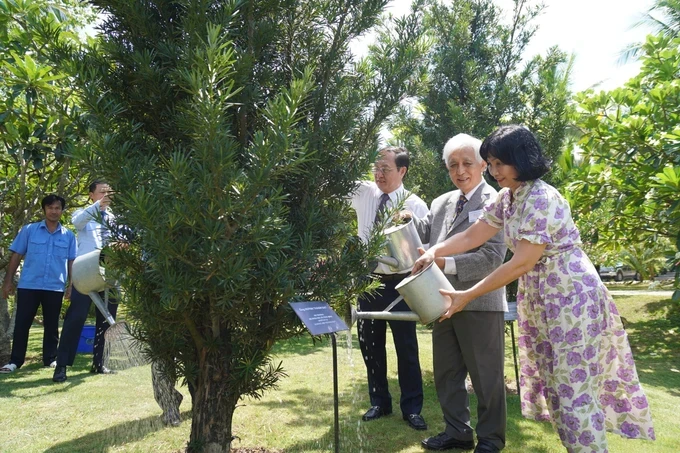
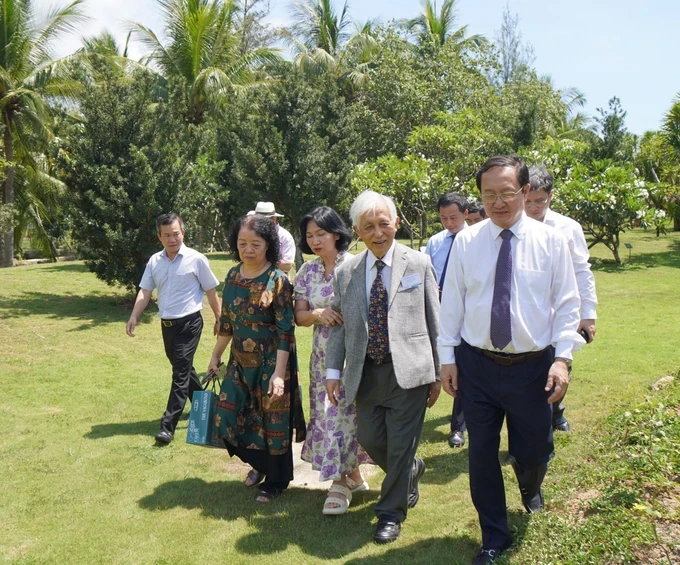
Minister Huynh Thanh Dat basically agreed with the proposal. He further praised that according to the ranking of Scimago in Spain, the number of international publications in the field of physics and astronomy in Vietnam has risen from the 60th in 2013 to the 46th in 2023.
Vietnam now has one International Physics Center recognized and sponsored by UNESCO since 2018. Since 2009, the National Fund for Science and Technology Development (Nafosted) has always prioritized financing high-level scientific research projects and accompanying scientists in carrying out international research collaborations, including the physics development programs where Vietnam has strengths such as theoretical and computational physics, physics of dense matter, quantum optics, nuclear physics.
